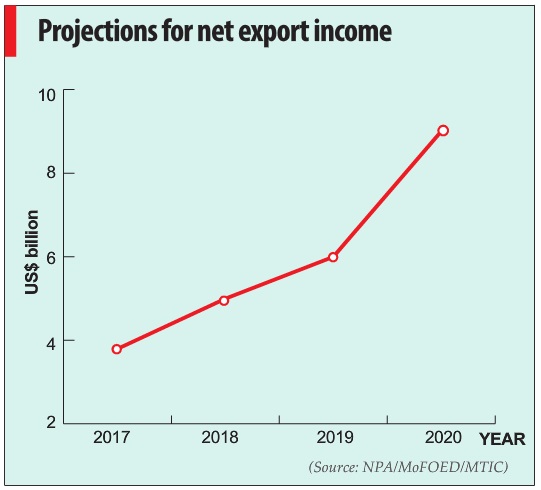In the region, there is market familiarity, less stringent rules, proximity and growing demand, he adds. These are the same reasons Uganda has struggled to penetrate markets like the European Union and the US.
Last year, there was a temporary ban on fruits and vegetables from Uganda to the EU market over standards and quality. One of the arguments fronted to explain the failure to penetrate these markets was non-acquaintance. “One of the reasons we are not penetrating is that we have not understood how to do business in the markets, we have not taken our traders and businessman to these places”, Kamugisha said.
Some people however would disagree and state that the main reason for this is the lack of a manufacturing base to export these high worth goods to developed markets like Germany and the US.
One of the export body’s targets is to introduce match-making where traders can go to foreign capitals and sit side by side with the consumers there to dialogue on what is needed and the best way to produce it. Going forward, this will be done through expos and seminars at Uganda’s foreign missions.
He also suggested that Uganda needs to create an export mind-set if we are to have an edge.
“China is rich because of exporting. Go out and do it. In Kenya, the head of the Export Council is at the rank of a minister,” he said. He feels UEPB should have at least some access to the highest offices. “In Uganda, we are comfortable with exports in the Ministry of Trade, yet exports are not limited to trade, it involves agriculture, IT, etc.”
At a recent government dialogue for the exports sector, Henry Banyenzaki, the minister for economic monitoring, said Uganda’s local content capacity must be utilised. He gave the example of Roofings, which cannot export steel to Kenya and Rwanda simply because the capacity is not enough.They mainly produce for the local market.
He also bemoaned the fight between statutory bodies responsible for exports, investors and their mother ministries over mandates. “Why should UEPB fight with Uganda Investment Authority (UIA) and Uganda Tourism Board (UTB)? We must harmonise and work like we are part of one government,” he said.

At the same event, Ezra Suruma, the former minister of finance and now presidential advisor on the economy, said if Uganda is to move from exporting its annual three million coffee bags, there has to be more farm acreage, more seedlings, more fertilisers and more capital. If we are to produce 20 million bags in 2020, we need to devote such resources, he said.
“If each household had two acres of coffee, that would be a good start but instead the last National Census says the average land holding for a household is less than two acres of coffee,” he said. Suruma added that it can be cumbersome for instance while consulting fellowministers in the EAC to agree on a common tax.
“How we manage tariff structures on imports in favour of home produced goods is not an easy task,” he added. Other experts like Paul Okitoi, the head of economic and strategic planning at National PlanningAuthority (NPA), said that Uganda’s structural limitations make it inevitable for it to import more and export less.
“When we have projects like Karuma, Standard Gauge Railway, we cannot source anywhere else in East Africa, 60% of steel will be imported,” he said, adding that such projects also require specialised equipment for development.
Okitoi also argued that the lack of substantial output for exports, limited research to guide production, low quality fertilisers and poor regulation of the input distribution chain are numerous factors that hamper Uganda’s export market.
He further explained that the country is short on storage and postharvest handling of agricultural produce and lack of a dedicated export financing institution. Besides, the country also lacks a legal framework for cereal farmers. “We have no grain policy, people just trade,” he said.
Isaac Shinyekwa, a research fellow at Economic Policy Research Centre (EPRC), said Uganda as a country is still grappling with mundane issues like Non-Tariff Barriers, which is a setback to Uganda even at a regional level.
He agreed with his counterparts that Uganda exports low value and high volume goods. “The reason a country like Kenya always exports more is because they always train their officials. They sent their economists, scientists to the US to study what the market wants,” he added.
As it is, the experts knowwhat has to be done to realise President Museveni’s dream of propelling Uganda to middle income status. What is lacking is the political will and the hard work required to put implement the ideas and proposals. If that is done, the annual lamentations would probably turn into celebrations.
 The Independent Uganda: You get the Truth we Pay the Price
The Independent Uganda: You get the Truth we Pay the Price


